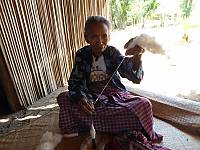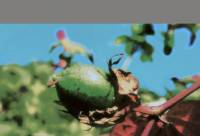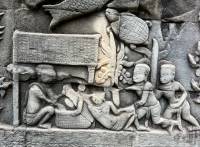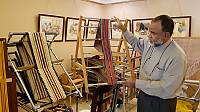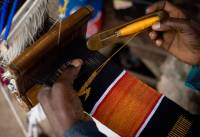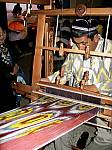
inscribed,Tais, traditional textile Tais, the handwoven traditional textile in Timor-Leste, plays an important role in the life of Timorese people. The textile is used for decoration and to create traditional clothing with specific styles for men and women. People use Tais to welcome new-borns as well as for traditional ceremonies and festivals. Ta... Timor-Leste
,Taquile and its textile art The island of Taquile located in Lake Titicaca on the Peruvian High Andean Plateau, is known for its textile art, which is produced as an everyday activity by both men and women, regardless of their age, and worn by all community members. The people of Taquile were relatively isolated from the mainland until the 1950s... Peru
Traditional Li textile techniques: spinning, dyeing, weaving and embroidering
inscribed,Traditional Li textile techniques: spinning, dyeing, weaving and embroidering The traditional Li textile techniques of spinning, dyeing, weaving and embroidering are employed by women of the Li ethnic group of Hainan Province, China, to make clothing and other daily necessities out of cotton, hemp and other fibres. In the absence of a wri... China
inscribed,Aklan piña handloom weaving Piña is a textile made from pineapple leaf fibres and woven using a handloom. Farmers harvest the leaves of the pinya Bisaya, a specific pineapple species, and extract the fibres by hand. The fibres are weighed using a local unit of measurement and method involving old coins of different denominations. The kn... Philippines
Cultural practices and expressions linked to Krama, a traditional woven textile in Cambodia
inscribed,Cultural practices and expressions linked to Krama, a traditional woven textile in Cambodia Krama is a woven textile associated with traditional practices and cultural expressions of the daily life in Cambodia. A rectangular cloth made of either cotton or silk, krama features a variety of grid-pattern motifs. The white, yellow, red and bl... Cambodia
Safeguarding intangible cultural heritage of Aymara communities in Bolivia, Chile and Peru
guarding measures to ensure the viability of the oral expressions, music and traditional knowledge (textile art and agricultural technologies) of the Aymara communities of Bolivia (La Paz-Oruro-Potosí), Chile (Tarapacá-Arica-Parinacota-Antofagasta) and Peru (Tacna-Puno-Moquegua). The activities, planned for implementation over the course of a fiv... Bolivia (Plurinational State of)
, Chile
, Peru
Traditional weaving of Al Sadu
ribed,Traditional weaving of Al Sadu Traditional weaving of Al Sadu refers to the traditional woven textile made by Bedouin women: in Arabic, ‘Al Sadu’ means weaving done in a horizontal style. The weaving is a form of warp-faced plain weave made on a ground loom. The cloth forms a tightly woven, durable textile and the weavers make use of natu... Saudi Arabia
, Kuwait
Craftsmanship of traditional woven textile Kente
inscribed,Craftsmanship of traditional woven textile Kente In Ghana, Kente is a fabric made of strips that are woven from silk, cotton or rayon using horizontal looms. The age, social status and gender of users influence the choice of colour and design of the fabric. Finished products are named with proverbs, sayings and social situations, among ot... Ghana
Al Sadu Educational Programme: Train the trainers in the art of weaving
orary weaving techniques and how to transmit this traditional craft to students. End-of-year school textile artwork exhibitions are also hosted at Sadu House to showcase the programme outcomes. Since the programme's inception in 2018, 30,959 students have completed the course, and sixty male and female art teachers from the six school district... Kuwait
l atlas and adras making through innovative training sessions, exhibitions and craft fairs, traditional textile festivals, and the publication of safeguarding materials and manuals. The CDC also promotes the use of natural materials, and supports the transmission of knowledge and skills about nature and the universe and their role in ensuring peopl... Uzbekistan
